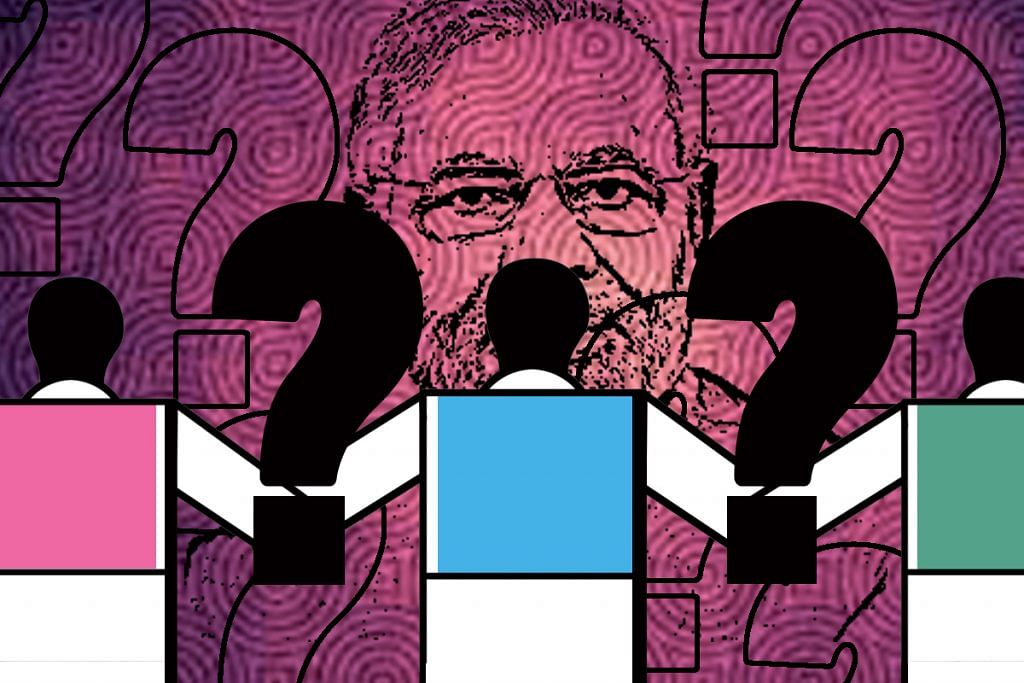The alliance is also unlikely to have a strong anchor party to act as the glue or a sufficiently comfortable majority
The sundry forces seeking to oust Narendra Modi and the Bharatiya Janata Party (BJP) have understood the importance of opposition unity. But the falling out between the BJP and the Peoples Democratic Party (PDP) in Jammu and Kashmir shows that it is often easier to form an alliance than to sustain it.
The first national coalition was in 1971, when five parties came together to fight Indira Gandhi’s faction of the divided Congress. Gandhi said this “Grand Alliance” was focused on removing her, while she was focused on removing poverty. The voters believed her. She got 44 per cent of the popular vote, compared to 24 per cent for the alliance partners; she also won two-thirds of the seats in the Lok Sabha.
The second time round it was different. After the experience of draconian Emergency rule, most voters across the northern belt were willing to vote for the nearest donkey, if it stood against the Congress — whose vote share dropped to 35 per cent, while the newborn Janata Party (a similar grouping to the one in 1971) got 43 per cent and won nearly twice as many seats as the Congress (298 to 153). And yet the government collapsed before the mid-point of its term. More recently, the Congress led two coalitions under Manmohan Singh, but they became a by-word for paralysis and for corruption as some of the alliance parties ran amok.
Minority governments have done better than coalitions: Indira Gandhi post-1969, the Narasimha Rao government and the Vajpayee governments were all in a minority in the House, but survived and even managed to get a lot done.
These precedents suggest that the prospects for an opposition alliance in and beyond 2019 are distinctly iffy. The government has suffered in popularity, but the prime minister still stands tall, as in 1971. An opposition alliance next year could expect to do better than in 1971, but not the second time. The 1977 alliance worked because voters needed no additional urging to throw out the Congress. Little was expected of the opposition other than that it must present its candidates. That may be the situation today for a certain sub-set of voters, but nowhere near what prevailed in 1977, when the Congress lost every seat bar one across the northern belt. So 2019 will not be a repeat of 1977. Victory, if it is achieved, will be a hard-fought one.
Then there are the political complexities, since there is nothing other than the survival instinct that is bringing the different parties together (“hang together, or hang separately”). The personalities don’t mesh well, there are over-lapping voter catchments, and each leader might see the main chance and want to make a go for it. The BJP could fish profitably in these troubled waters, as the Congress did to split the Janata Party in 1979 and then VP Singh’s Janata Dal in 1990.
State-level reality also intrudes. The Congress does not want to deal with the Aam Aadmi Party in Delhi, the Shiv Sena will not be acceptable in the Maharashtra tent, the Trinamool Congress may not want to yield any space to the Left parties in West Bengal, and likewise the Telugu Desam to the Congress in Andhra Pradesh. So what is more likely than an all-encompassing Grand Alliance is a mosaic of state-level adjustments with intense bargaining over seats, causing tensions even before voting day.
The key point, though, is that the parties represented in the government hold together if each one knows that it cannot on its own bring down the government by leaving the coalition. That underlines the importance of a strong anchor party as the natural leader and glue for the group, or a sufficiently comfortable majority for the alliance as a whole. As things stand, neither seems a likely election result. Minus these, you need someone who stands out by making things work even in a complex situation. Since such a leader too is not available, many wagers would be that an anti-Modi government would last no more than the BJP-PDP government. After that, could Modi have a second coming, as Indira Gandhi did in 1980?
By special arrangement with Business Standard
पढ़ें हिंदी में: मोदी बिना महागठबंधन ‘महा’ नहीं
